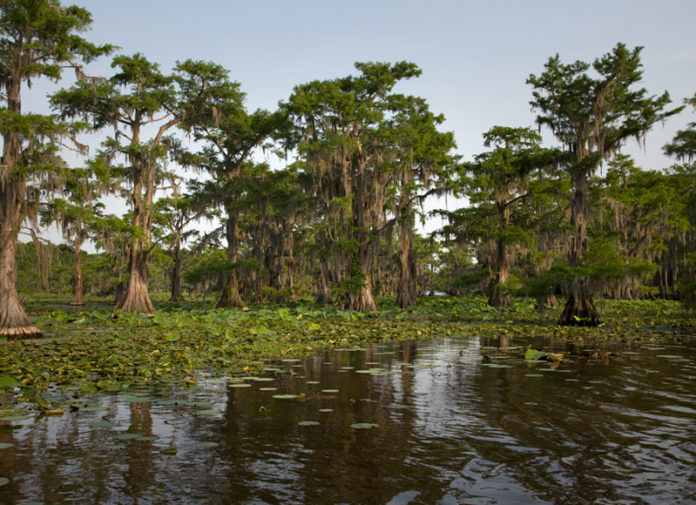The Photographer Magazine Online Bonus Content
by
Bill Hedrick
I was only 5 years old when I first visited Caddo Lake on an overnight fishing trip with my Dad, my uncle, and my cousin. We stayed in a cabin owned by the company where Dad was employed and ventured out during the night in a 14 foot aluminum boat to check trot lines we had set and baited earlier. It was a spooky place to be at night as we navigated through the huge cypress trees covered with Spanish moss, not to mention alligators and other wildlife.
The cabin was a bit on the primitive side and the pier was missing a few boards requiring you to jump across sections of it. On our return trip during the black of night, I got out of the boat first, followed by my cousin, Dennis, who was my same age. His Dad was behind him and my Dad was last. As kids will do, I was running and jumping over the missing sections of the pier when I heard a splash and saw my cousin disappear below the surface. In a split second, his Dad reached down into the water and pulled him out by one arm. I will never forget those wide-opened eyes and the look on his face. He and I are 69 years old now and both of our Dads are still alive… 89 and 93.
Over the course of my lifetime, I’ve fished Caddo Lake time after time, night and day. But it wasn’t until I was a grown man that I learned about some of the rich history of this 25,400 acre lake and bayou on the border between Texas and Louisiana. According to Caddo legend, the lake was formed by the 1811–1812 New Madrid earthquakes. There may be some truth to the legend but many geologists feel the lake was formed, either gradually or catastrophically, by the “Great Raft,” a 100 mile log jam on the Red River in Louisiana, possibly by flooding the existing low-lying basin.
Geographically, Caddo Lake covered many more square miles in the early-to-mid 1800’s than it does today because of the “Great Raft,” a 160 mile long series of log jams and debris that jammed the Red River, impeding further settlement of areas north and west of Shreveport. To remedy the situation, Captain Henry Miller Shreve was given the task of clearing it. After years of work by the Corp of Engineers, the task was completed. Unfortunately, clearing the Great Raft lowered the water level of Caddo Lake, dooming any steamboat navigation and leading to the demise of Jefferson, Texas, as one of the nation’s major port cities.
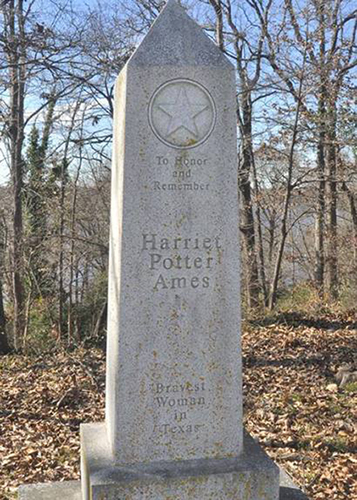
Potters Point – Early settlers to the region faced a number of challenges just to survive in the Caddo Lake region. The story of Robert and Harriet Potter is one of those stories. Located on the south end of FM 727, on the northwest portion of the lake, is the site of one of the most famous events in Texas History. Robert Potter, a signer of the Texas Declaration of Independence and first Secretary of the Texas Navy, settled here with his wife, Harriet, in 1837, on a high bluff about 300 yards from the water’s edge. Harriet had been married before and had two children.
Robert Potter was a lawyer from North Carolina with a “shady” past who came to Texas and even fought in the Battle of San Jacinto. In 1842, he tried to have a political foe named William Rose arrested. One night, Rose and his men surrounded the Potter home with an arsenal of weapons, including one cannon, and Potter tried to escape by diving into the lake where he was shot and killed.
After his death, Harriet learned a disturbing “secret” about her late husband. In a will drafted just a month before his death, he had left Potter’s Point to two women from the Austin area. Harriet was ousted from Potter’s Point and spent years in courts trying to reclaim the land she had lived on for some 40 years. But the courts ruled that her marriage to Potter was illegal and she lost everything. She died in 1902. In 1998, the Caddo Lake Historical Research Committee dedicated a monument to Harriet Potter near the place she called home. Visit the monument for yourself and close your eyes to visualize how life was in those early days.
Other settlers would soon follow and nearby Jefferson would soon become one of the largest cities in Texas with steamboats traveling all the way from the Gulf Coast and through Caddo Lake.
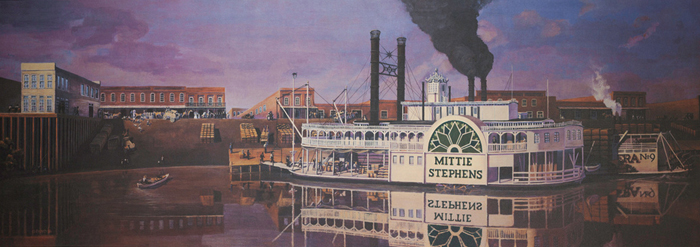
The Mittie Stephens was one such steamboat. Joseph Stephens built the ship in 1863 and named it after his daughter. But almost immediately after it left the shipyard in Madison, Indiana, Union Forces seized it to carry dispatches, troops, and supplies during the failed Red River Campaign. Afterwards, it was purchased by private owners and eventually ended up in New Orleans. By 1866, the Mittie Stephens was making regular runs between New Orleans and Jefferson, Texas.
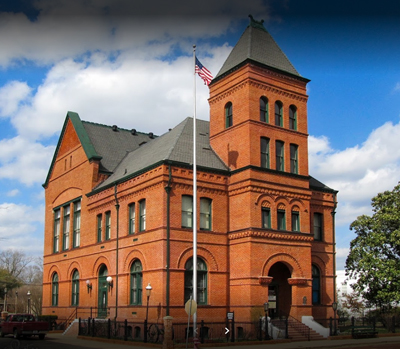
On the night of February 11, 1869, the Mittie Stephens was steaming up through Caddo Lake on its way to Jefferson, loaded with 107 passengers, crew, gunpowder, government payroll for frontier regiments, and 274 bales of hay stacked on her deck. It was an accident waiting to happen. Dinner had been served and, by 9:00 pm, the saloons onboard the ship were thinning out. She was approaching Swanson’s Landing around midnight when a crewman noticed smoke coming from the hay. The alarm was given and the crew turned the vessel toward the nearest shore but the flames spread quickly.
The cry of “Fire!” was heard on the doomed vessel and women and children were running in every direction, vainly appealing for help which would never come. Before it could make it to shore, the Mittie Stephens was grounded, which meant that passengers might have saved themselves by wading to shore. But the side-mounted paddle wheel kept turning and many who leapt overboard were sucked into the wheel. At least 61 people were killed. Years later, the hull of the Mittie Stephens was located in the mud and a few items were salvaged from the wreckage. The ship’s bell is on display at the Jefferson Historical Museum.
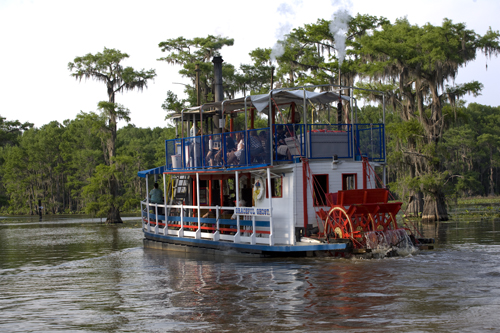
The Graceful Ghost – Until just a few years ago, a 1/4 scale replica of those early steamboats once again sailed Caddo Lake. The “Graceful Ghost” was piloted by Captain Ron Gibbs who gave tours of the lake that were like stepping back in time. Captain Ron was a real “captain” and has travelled the world in a variety of vessels, even as a Merchant Marine during the Vietnam era. At some point, this Shreveport native decided to make his home in the small town of Uncertain, Texas, on Caddo Lake. In 1999, he purchased the Graceful Ghost and set about upgrading and repairing the boat before it could be Coast Guard approved. It was the last known wood-burning, steam powered, stern paddle wheel touring vessel in the world.
The Coast Guard approval of the Graceful Ghost is a story in itself. In the days of the mighty steamships of the 1800’s, boiler explosions were so common that the government put together an agency charged with the task of inspecting and certifying boilers. It was named the U.S. Coast Guard. The irony of it all is that the inspection of the Graceful Ghost’s boiler was probably the first time that some of the Coast Guard representatives of today had actually seen a true wood-burning boiler. Needless to say, they were impressed. But the days of the Graceful Ghost have come to an end due to funding and other problems related to its upkeep. But it is still docked at Big Pines’s Lodge. Captain Ron has since retired and, sadly, new owners have no immediate plans to return the Graceful Ghost to service.
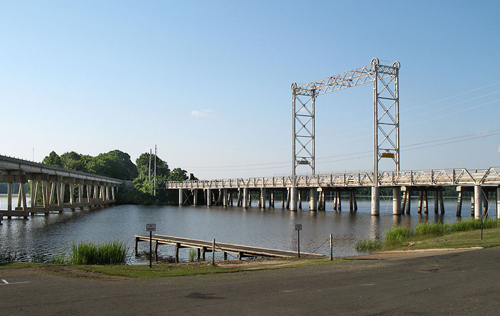
Mooringsport Drawbridge – On the east end of the lake is the small community of Mooringsport, Louisiana. This was the final port of departure of the ill-fated Mittie Stephens. There you will find the Mooringsport Drawbridge. In 1914, the Midland Bridge Company of Kansas City, Missouri, built a “vertical-lift drawbridge” to replace the ferry that had been there for decades.
In the summer of 1941, just prior to WWII, the U.S. Army held maneuvers in and around the bridge in order to prepare soldiers for war. During those maneuvers, Generals Eisenhower and Patton came to Mooringsport and led the “Red and Blue” armies in the “capture” of the bridge, bombing the bridge with sacks of flour.
As late as the 1970’s you could still drive across the bridge but it was soon determined that a newer and wider bridge was needed and the old bridge was closed to traffic. Although the original proposal was to tear down the old drawbridge, a citizens campaign was launched and it was spared as a pedestrian bridge. It is now officially entered into the National Register of Historic Places.
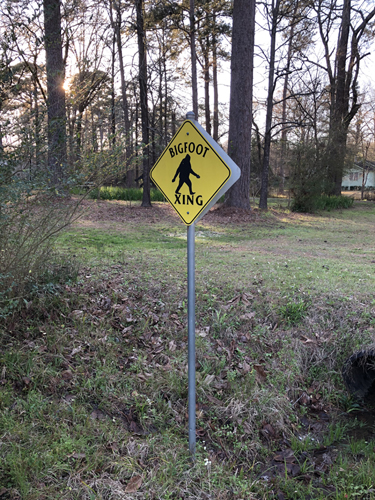
Bigfoot Sightings – Drive around the community of Uncertain, Texas, and you might see signs for a “Bigfoot Crossing.” Craig Woolheater, head of the Texas Bigfoot Research Center in nearby Jefferson, says Caddo Lake is a land of Bigfoot. And he’s not kidding. Woolheater’s non-profit organization is serious about their pursuit of the legendary creature known as Bigfoot. A cryptozoologist at heart, Woolheater claims there have been several substantiated sightings of the Bigfoot in the lake region, as well as hundreds of unofficial reports every year.
So strong is the belief that Bigfoot inhabits this wilderness area that the Research Center stages an annual conference each autumn in Jefferson with multiple field trips into the back country scheduled every year. And while proof positive has yet to be unearthed, few will disagree that the Caddo Lake region is a place that lends itself to a place that is both wild and untamed.
Movies Filmed on Caddo Lake – Over the years Caddo lake has hosted the filming of over a dozen movies, including The Long Hot Summer, The Bayou Boy, (Disney’s) Soggy Bottom USA, Southern Comfort, Big Bad John, The Legend of Boggy Creek, The Ghost of Cyprus Swamp, and many documentaries.
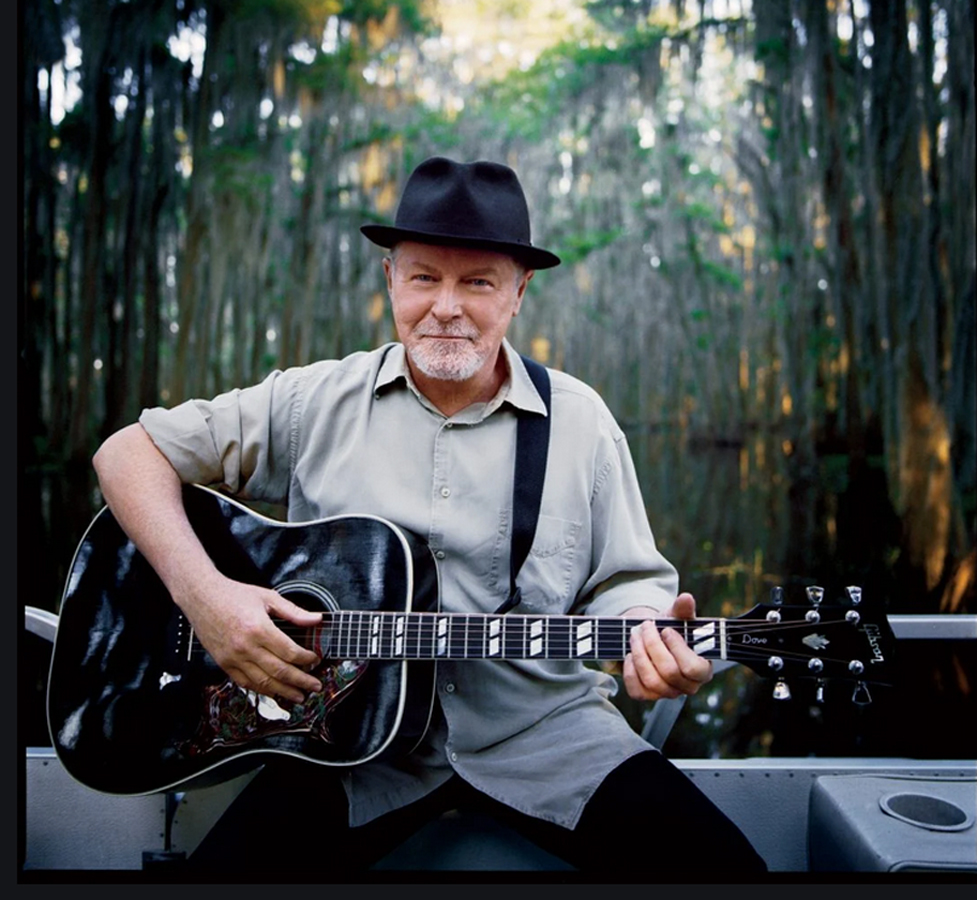
Don Henley, drummer and front man for the Eagles, grew up near Caddo Lake in nearby Linden, Texas. As did my father, Henley’s father also brought him to Caddo Lake and taught him how to fish. Those experiences helped instill in Henley a deep connection to Caddo Lake’s mysterious beauty.
Henley has continued to return to the lake throughout his life, bringing his own children to Caddo Lake and teaching them to fish there as well. He has often called Caddo Lake his “church” and a place where natural beauty and peaceful seclusion provide a refuge from the world and a site of spiritual nourishment. In the 1990’s, Henley founded the Caddo Lake Institute to study the lake’s delicate ecosystem and help foster its conservation.
Once you experience the magic of Caddo Lake, you will understand why people come back again and again. Boat tour guides have a story around every turn, some more bizarre than others. When you’re talking to a guide, be sure to ask about “Dick and Charlie’s Tea Room.”
During prohibition from 1919-1933, this portion of the lake was on the county line between Harrison and Marion Counties. Harrison was wet, and Marion County was dry. The Harrison side “Beer Boats” and Johnson’s Ranch Marina used “Water Taxi’s” (aka row boats) would shuttle people across the bayou for drinking and dancing.
At present they are all gone, but there is a house that still stands on stilts called “Dick & Charlie’s Tea Room” across from Johnson’s Ranch now used as a guy’s fishing house. Recently featured on one of the episodes of “Treehouse Master’s” for repair of the front stilt supports, the owners are in the show. At the front is a sign posted saying: “Dick and Charlie’s Tea Room. House Rules: 1. There Ain’t None 2. There Never Was None 3. There Ain’t Gonna Be None.
For those who will miss this year’s TPPA Road Trip to Caddo Lake, maybe we’ll see you next time.



